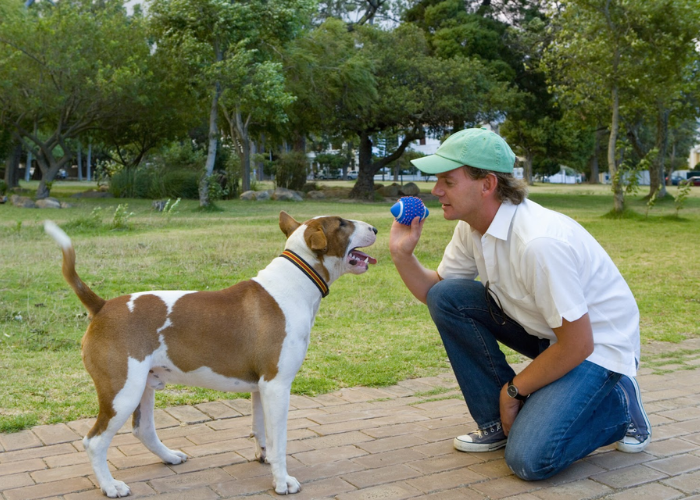Around 73% of dog owners used some kind of training method.
Dog training is a great way to bond with your dog and teach them some basic commands. It can also help prevent destructive behaviors from developing, like chewing on shoes or barking at the mailman.
Training your puppy can be as simple as teaching your dog to walk on a leash or sit when you ask. It can also be more involved, like housebreaking your puppy or teaching them how to do a trick.
If you are looking for a dog training checklist for new owners, this short and simple guide is for you.
Research Your Breed of Dog
Before you get a dog, it’s a good idea to do some research on the breed.
There are many dog breeds out there, and each one has its own personality. Some dogs are more energetic than others, and some breeds are more prone to certain behavioral problems.
If you know what to expect from your breed of dog, it will be easier to train them.
Create a Training Schedule
A training schedule is a great way to stay on track. It’s gratifying to see the progress your dog has made, and it helps reinforce what he’s learned.
When creating a training schedule, make sure that each task has a date and time.
The schedule should also be flexible so that you can adjust it depending on your dog’s progress. The key is to ensure that both of you are consistent with your training sessions.
Set Boundaries for Your Dog
Being a dog owner means you set boundaries for your dog. You are the leader of your pack, and they will look to you as their guide.
Not only that, but dogs need structure in their lives, to make sure that they know what you expect of them.
Set boundaries for your dog and be sure to enforce them consistently. This will help to build trust with your dog and help them learn what is acceptable behavior.
Start Training Early
Dogs are creatures of habit, so start training them early. The younger your dog is when you train, the more likely it is that it can learn quickly and easily.
Start by teaching your dog basic commands like sit, stay, and come. Once you’ve mastered these, add a few more commands and continue to work on them.
Make sure that your dog knows how to handle different situations and environments. This will help prevent behavioral problems from developing later on in their lives.
Establish a Routine
Dogs thrive on consistency. For example, if you train a dog to sit when they receive their leash, they will be less likely to pull you around.
Establishing a daily routine and abiding by it will teach your dog what to expect of them each day.
This will also help them be less anxious and more relaxed. Something as simple as walking your dog before bedtime can make a big difference in their overall health and well-being.
Reinforce Positive Behavior
When your dog does something good, it is important to reinforce that behavior. You can do this by rewarding them with a treat or by giving them a pat on the head.
This will help them learn what they did right, and they will repeat it more often.
You can use the same technique when your dog is doing something that you don’t like. It may take some time for this technique to work, but it will be worth it in the end.
Keep Training Sessions Short
Training sessions should only last for a few minutes. If you keep them too long, your dog will get bored and quit paying attention.
You can break these sessions up into multiple parts if necessary.
You should also keep your training sessions fun and exciting. If your dog doesn’t have any fun, then they won’t want to engage in them.
Choose the Best Methods
The best methods for training your dog are the ones that work for you.
Choose techniques based on your personality and lifestyle. Some people prefer to use treats as rewards, while others find that praise is the best motivator.
Consider the breed of dog you have and how old it is when deciding which method to use.
Build Your Dog’s Confidence
A confident dog has a strong sense of self. This means that it’s not easily intimidated and can handle situations where other dogs or humans are present.
You can help your dog build confidence by exposing it to new situations.
Take your dog to the park and let it play with other dogs. Go on walks in different parts of town so that your pet experiences unfamiliar sights, sounds, and smells.
Stay on Top of Problem Behavior
As soon as you notice your dog is behaving badly, take action. If your dog is barking at other dogs, distract it by calling its name or giving it a treat.
If your dog is digging holes in the yard, spray some water on the ground to discourage this behavior.
Sometimes poor dog health causes behavior problems, so take him or her for regular veterinary exams and vaccines. If you need to buy pet insurance, contact the best pet insurance companies today.
Hire a Professional Trainer
Training is a great way to keep your dog from developing bad habits. If you’re not sure where to begin, hire a professional trainer.
A trainer can come to your home and assess your dog’s behavior.
They will teach you how to train it, as well as give you tips on how to deal with specific issues. Sometimes, they will even provide you with the equipment you need to train your dog.
Dog Training Checklist: Make It Easier for You and Your Pet
By following this dog training checklist, you’ll be better prepared to handle the challenges of dog ownership.
You’ll have a better understanding of how to train your dog and what supplies you need. You’ll also be able to enjoy the benefits of having a well-behaved companion who loves spending time with you.
For more pet training tips and tricks, check out the latest articles on our blog.




